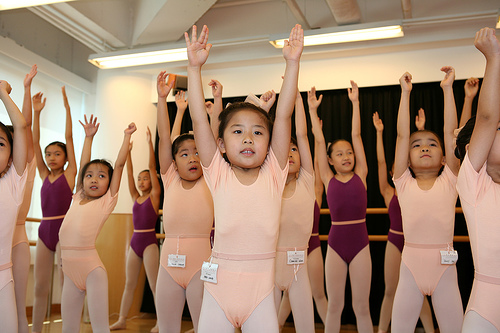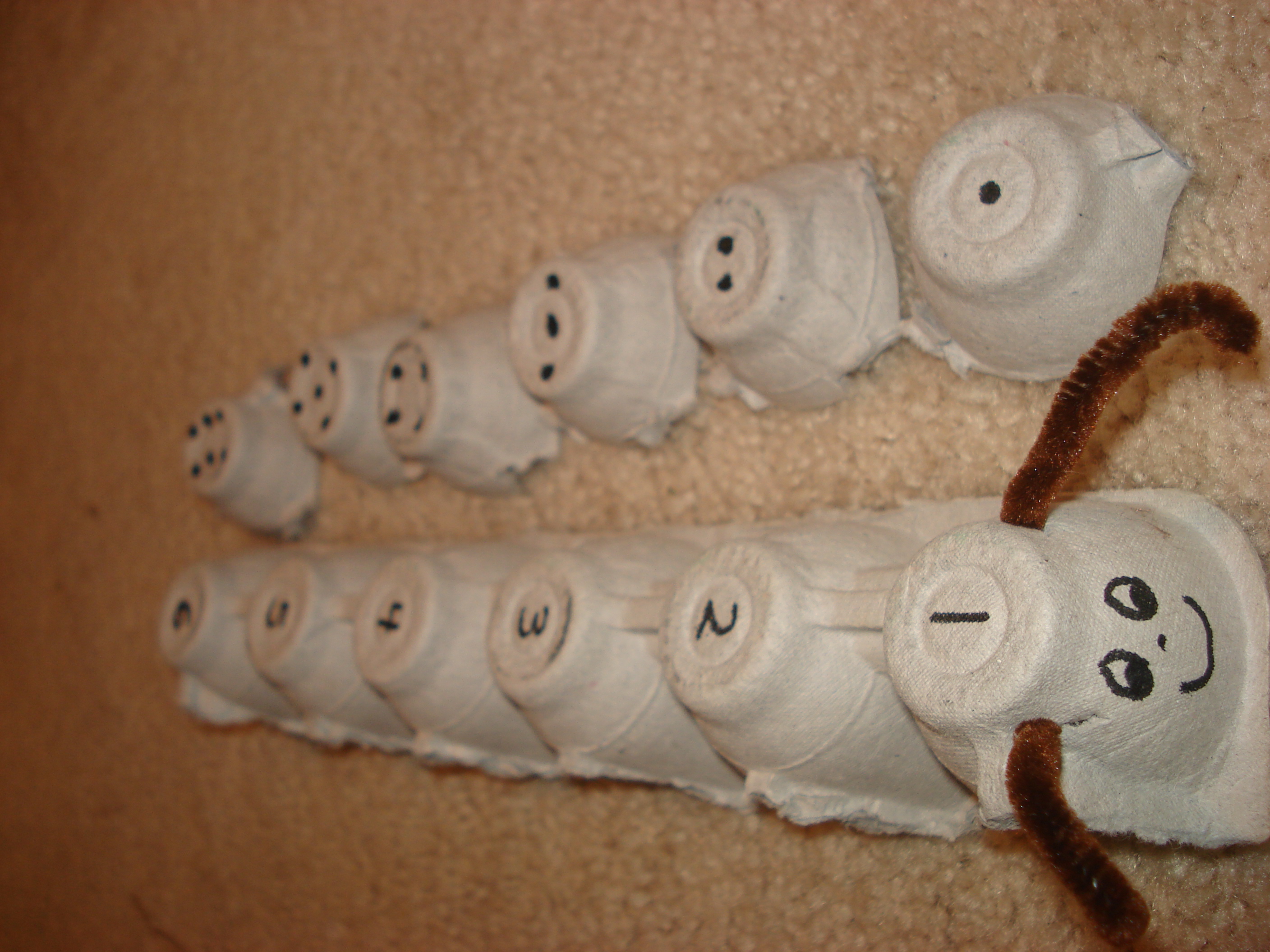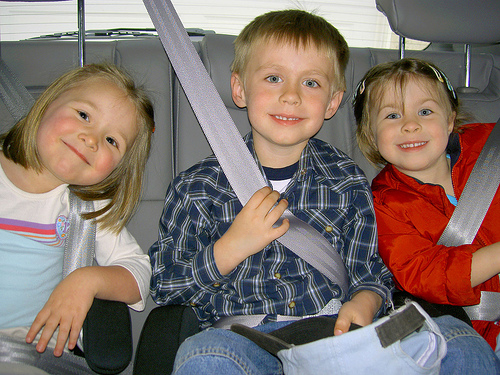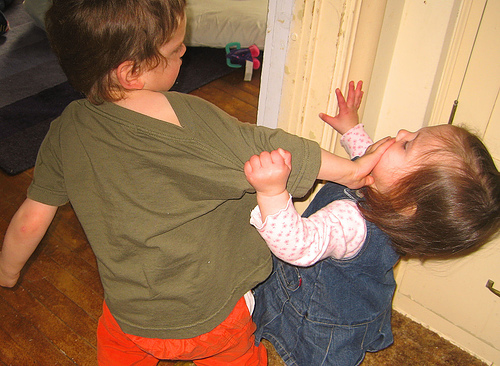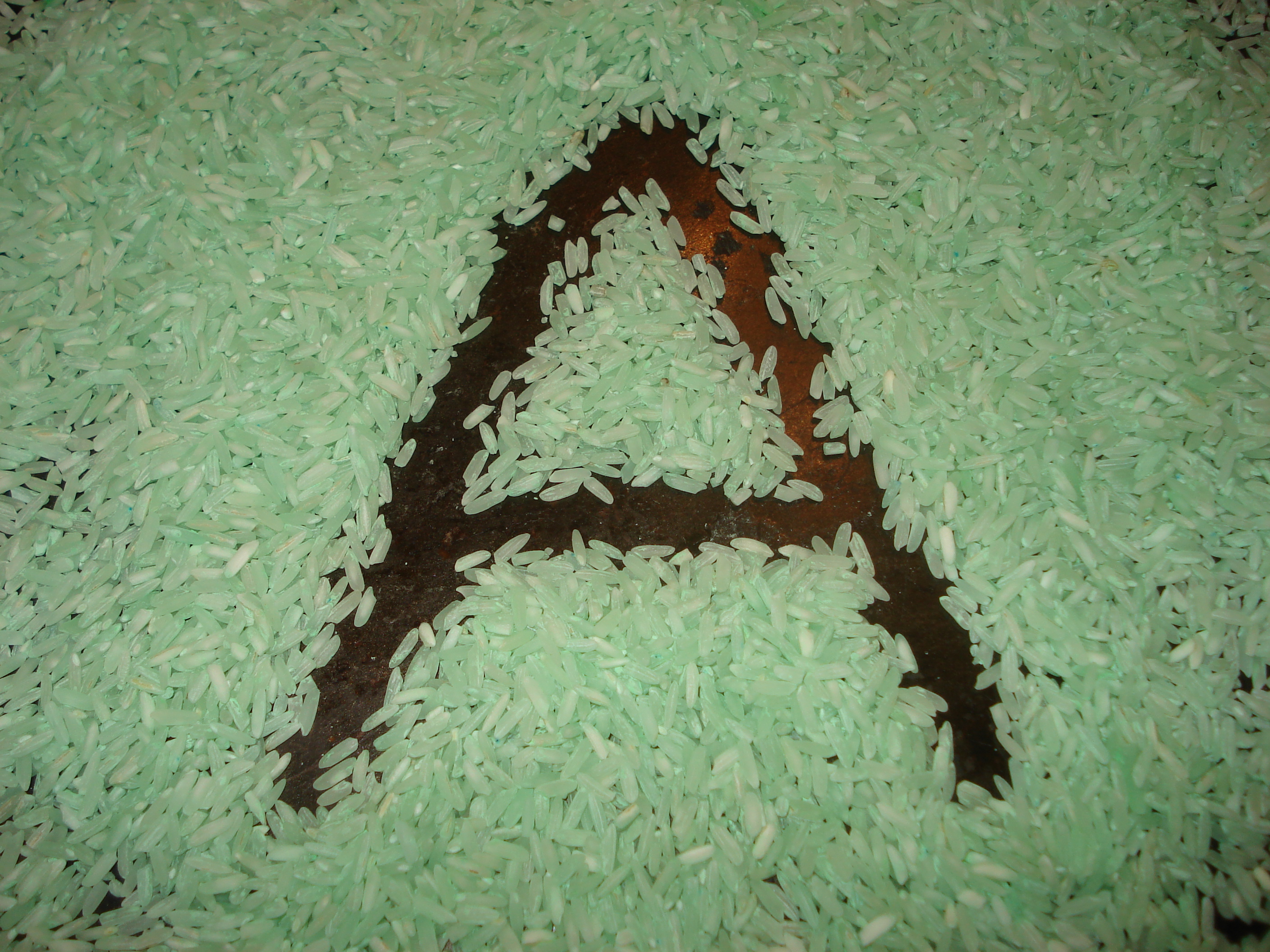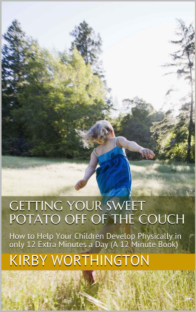Grocery shopping with preschoolers isn't easy. We get goal-oriented about shopping and feel frustrated that our kids are slowing us down. But grocery stores offer a wealth of stimuli for a child's brain, and shopping is a great opportunity to help your little one learn and grow. Below are some ways you can engage your child while getting your shopping done.
Name everything. Everything you buy, hold it up and name it. Let your child hold, feel, and smell items. This will help your child's vocabulary explode.
Work on colors. Once your child knows lots of nouns, you can begin to work on colors. Hold up a banana and say, "Yellow. Yellow banana." Do this with anything that has a clear color. Show your child something red, and then say, "Can you find anything red?" Let them name everything they can find that's red. Play "I Spy." Keep in mind that kids under 3 probably won't remember what they picked, so they may say no to everything you guess!
So often we think to let children feel textures with their hands, but we seldom think to let their feet experience new textures. Feeling textures with the feet is great for toddlers and preschool aged children. It stimulates the nerve endings in their feet as well as working on balance. And it is fun.
How Do We Play?
- Place several textures in a row on the floor. Examples: Soft spongy foam from packing or bubble wrap. The large bubbles make a loud bang when popped, so avoid those for toddlers and young pre-school aged children. It can frighten them and ruins the experience. You also could use a mesh bag that oranges come in, a terry cloth towel, clear cellophane that makes crinkly sounds when stepped on, fuzzy fabrics like velvet and fake fur, the bottom of a Styrofoam egg carton, or clean meat trays.
- Tape them down to avoid slips and falls.
- Have all ages walk barefooted on the textures. Some will walk on them over and over. Some will try it once. Some may be frightened. Don't force it.
- If the child doesn't like it at first, encourage them to feel the items with their hands. If possible, help them walk on at least one texture to see that it feels good. Introduce this experience again after about a week. They may love it. After an introduction to it, the second time seems more familiar.
- Don't use unpleasant textures. Sand paper and hot coals are not favorites. Remember, we want to build trust as well as balance. Experiment with different textures. You try walking on it barefoot, too. If the child sees you do it, he or she will know it is safe. It's fun. And it gives you a foot massage (which some people pay big bucks for).
Photo Credit: Adrian Dreßler cc
Bubbles in a cup is a great summer activity for outside. It teaches concentration and attention span, strengthens the muscles of the mouth, provides a science lesson, teaches following directions, and is lots of fun!
Materials:
- Towel to soak up spills if inside
- Tray under the cup or bowl
- Flat-bottomed bowl or cup – one per child
- A little Liquid detergent for dishes in water
- Straw – one per child
- (for bubbles that float, add a little cooking oil)
Procedure:
Structured activities and classes for preschoolers abound these days. Amid the dazzling array of opportunities, how do we know what choices are beneficial for our kids, and how much is too much?
A good rule of thumb for preschoolers is to use their age as a guideline for the number of group activities a week. A two-year-old probably can't handle more than two classes a week (this includes religious services/Sunday school), and a three-year-old shouldn't have more than three a week. It's also important to know your child's personality here. Are they energized by being around people? Do they do better in smaller classes or just doing activities with one other friend? Follow your child's lead.
Art, music, and sports can all be fabulous for preschoolers. The important thing is that they be physically engaging, age appropriate, and focused on experience rather than outcome. Look for activities that provide tactile learning experiences and opportunities to explore and experiment. Choose sports that don't focus on competition, but rather on learning skills, teamwork, and having fun. Swimming is a lifesaving skill to have, and it can be a great physical activity to start early. Gymnastics teaches kids balance and coordination, resulting in fewer injuries.
A travel activity book is a spiral notebook filled with learning games and fun activities for times your child needs to do something quiet, like in the doctor's office, waiting rooms, or during car trips. It's a combination of activities drawn onto pages, games held in envelopes stapled into the notebook, and blank pages for creative fun. Grab a notebook and let's get started!
Envelope games
Pipe-cleaner people. In one envelope put in pre-made pipe-cleaner people, bits of cloth for clothes, and plain pipe cleaners for making props. Playing with posable pipe-cleaner people is great for your child's finger muscles and fine motor skills, and it makes for fun pretend play. You can tie pipe cleaner people onto a car seat for a preschooler so if your child drops them, he can pull them back up again.
Does the idea of a car trip with small children fill you with dread? Road trips don't have to be torture. In fact, they can be an immersion learning opportunity for your kids. If you fill your time in the car with fun games and activities, you can expect your children's vocabulary and knowledge to grow exponentially in a short time while you cultivate fun memories and a strong relationship.
The real challenge of road trips is keeping kids entertained. Here are some ideas that will engage your kids and help them learn and grow at the same time.
Play rhyming games. Let the youngest child say a word and have everyone else say a word that rhymes. Try to come up with as many rhymes as possible. Read Piggle by Crosby Bonsall, and play "Piggle" by saying four words that rhyme, mixing up real words and nonsense words.
Bean bags are fun learning materials for babies, preschoolers, and even older children. The easiest bean bag to make is to fill a child's sock with popcorn, beans, or rice, and then tie a knot in the end of the sock.
For babies, give them a bowl full of bean bags and let them pull them out and put them in. Say "out" and "in" as they move the bags. This is good for eye-hand coordination, hand strength, and learning the concepts of out and in.
As children become able to stand, bean bags work great for throwing games. For ways to teach throwing skills, see this post. A first step is just to have your toddler stand over a bowl and drop the bean bag in. Next, you can teach the throwing motion. Have your toddler or preschooler hold the bean bag and swing their arm back and forth. Tell them to let go when their hand comes forward. You can have them experiment with letting go at different points so that they can see what happens. It takes some time to get the hang of letting go when you swing your hand forward.
Hula hoops are great tools for developing physical skills, and they are lots of fun too! A preschooler probably won't be able to use a hula hoop for its intended use yet, but there is still a lot they can do with one. Here is a list of games and learning activities for hula hoop time.
Lay the hoop on the ground and use it as a target for a bean bag toss.
Put a series of hoops on the floor, and have your child follow directions to hop from hoop to hoop. They can jump with both feet, step, hop on one foot, etc.
Now that you've been working on catching and hitting with your little one, you may want to move on to throwing skills. Obviously, your baby has probably been tossing toys around since he could sit up, but you'll want to work with your preschooler on how to throw properly and how to make the ball go where he wants it to.
The best place to start is with underhand throwing. Use something squishy that your child can easily grasp. A rolled-up pair of socks is perfect for this. Have him hold onto the "ball" and swing his hand backward, then forward, and back again. Then have him swing his hand back and hold it there, then forward and hold it there. This helps develop control.
Explain that when he swings his hand forward, that's when he lets it go. When he has practiced swinging his hand forward and letting go, then you can put out a big laundry basket and let him try to throw balls into the basket. Make sure to stop before he gets tired of playing.
Hitting a ball is a great activity for developing eye-hand coordination, and it lays a foundation for many sports activities as your child grows. As a bonus to you, this section provides some great games your child can play while you are cooking dinner or otherwise occupied!
Have you noticed how fascinated little ones are with balloons? Batting a balloon is a perfect early step to learning how to hit a ball. Start with a helium balloon anchored to the ground by a string. (Tie it to something heavy.) Show your child how to hit the balloon and then wait til it pops back up again before he hits it again. This helps him follow its progress with his eyes, work on depth perception, and develop a sense of timing in hitting a ball.
Once your child is batting a helium balloon well, tie a regular balloon to the top of a door frame, perhaps in the entrance to your kitchen, so he can practice while you cook or clean. The balloon should be hanging about waist-level for him. Show him how to hit the balloon with the palm of his hand (forehand) and with the back of his hand (backhand).
Did you know that you can work with a newborn on ball skills? Ok, she's not going to be playing catch with you right away, but playing ball involves a complex group of skills, some of which you can be helping your child develop from infancy. Here is a sequence of activities that you can work on with your child as she grows to help her develop coordination, strength, and motor skills that will benefit her all her life.
Two notes: as with all activities, stop before your child gets bored or tired. Very short spurts of these activities are fine—in fact, great! Second, if your child is not a baby any more, it's not too late! You can still play these games together and use many of the same activities to teach a preschooler or elementary schooler to catch.
1. Tracking with the eyes. You know the saying, "Keep your eye on the ball"? Being able to track a moving object with the eyes is a skill that infants don't yet have, but that can be worked on and developed. Begin by catching his eye, then slowly move your face side to side. As you notice him being able to follow you with his eyes, you can begin to hang interesting toys on a string or shoelace and move it slowly side to side and then up and down. This not only prepares baby for ball-play, but lays a foundation for future reading and helps develop attention span.
Colors are one of the first things that parents think about teaching their children. Teaching your preschooler colors can be a lot of fun.
You should wait to introduce colors until your child has a solid vocabulary of nouns. A preschooler's brain is wired to learn the names of objects before learning to describe those objects. Kids have what is called the "language explosion" between 18 and 24 months of age, during which they will be learning lots and lots of nouns. Work with their brains during this time by naming everything, and by not confusing things by adding adjectives.
After about the age of two, your child may be getting ready to learn colors. The best way to kick off this process is by having a "red day." (Really, it can be any color you want.) Pick a color, like red, and focus on it. Have everyone wear red. Pick red foods to eat. Pull out red blocks or red toys. Finger paint with red paint. Put up red streamers and balloons and hang red tissue paper over the window. Get as much red in your day as you can. Every time you see something red, point it out.
Few things can grate on a mom's nerves like constant fighting. You want your kids to be best friends with each other, to play well together, and to love each other, but you may be at a loss as to how to deal with the inevitable bickering.
The first step to dealing with a fight is to help your kids calm down. When emotions are running high, kids are not capable of problem solving. You may need to separate the children, not as a punishment, but as a break to help each one regain some equilibrium. Do you know what calms your children down? Is it being alone or cuddling with you? Do they feel better when they sit down with a book or doll or when they listen to music? Does it help them to have a comfort item? If you ask your children to take a break in their rooms, tell them what they can do ("You may sit in your beanbag and talk to your doll," or "You may play with your legos.")
When the emotions have settled, talk to each child individually about what happened. Have them put their feelings and the events into words, and help them notice what upset them. Reflect and affirm their emotions. ("That must have been really frustrating when your little brother knocked down the tower you worked so hard on.")
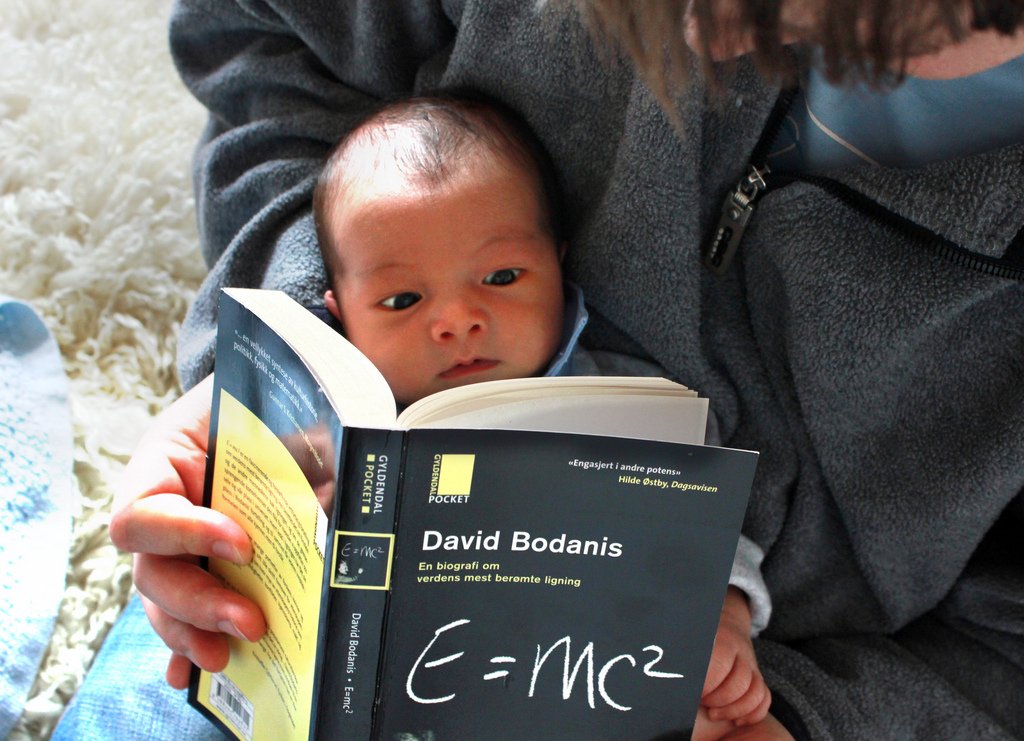 You've heard that reading to your children is important for their eventual success in school and in life. But your preschooler just won't sit still to listen to you read!
You've heard that reading to your children is important for their eventual success in school and in life. But your preschooler just won't sit still to listen to you read!
In order to have success at reading to your little ones, you need to have the right goals for your reading time. For infants, reading is about hearing the intonation of your voice. They aren't going anywhere, and they don't understand the words, so you can read whole sections from your own books if you want.
One of the main tasks of the toddler and preschool years is developing autonomy. This can be a great inconvenience to parents, who know that, for example, getting out the door would happen much faster if three-year-old Trevor didn't insist on dressing himself when he can\'t do the buttons, tying his own shoes when he doesn't know how, or struggling into his jacket without help…backwards.
One of your jobs, as a parent, is to facilitate the emerging autonomy of your children. This doesn't mean suddenly abandoning your child to the mercy of his shoelaces, but it does mean supporting your child\'s drive to learn to do things himself.
You can survive your child's growing autonomy by:
Materials:
- Uncooked macaroni or rice
- Ziplock bag
- Food Coloring
- Rubbing Alcohol
Put a couple of tablespoons of rubbing alcohol in the ziplock bag. (Use about a tablespoon for 2 cups of rice or pasta.) Add a few drops of food coloring. Add the uncooked pasta or rice, zip the bag, and mix it around until the pasta or rice is colored. Take the rice or pasta out of the bag, and spread it on paper towels to dry. Once it is dry, the color will stay and not come off on your fingers. The alcohol evaporates, so what's left is non-toxic, but we don't recommend eating it!
The colored rice or pasta is fun for pouring and measuring or for digging in. Hide little plastic animals in the rice, and let your child dig around for them. Name each animal as your child finds them. If you are working on colors, you can hide colored bottle tops or lids in the rice and let your child dig for them. Name the color together as he finds each lid.
Do you love the excitement on your little one's face when you say yes to something they really want? Do you cringe inwardly when you know you are going to have to be the "bad guy" and say no? With some skillful maneuvering, you won't have to play bad cop very often.
We believe that it's important to say yes to everything you reasonably can say yes to, and to only say no for a strong reason, like safety or health. But the key to avoiding negativity is to stay out of yes-or-no scenarios. Instead, offer choices.
Offering a choice between two acceptable alternatives makes a yes inevitable. You only offer options that you feel good about, so you can accept either choice your child makes.
'Tis the season…to try desperately to keep your children quiet during religious services, concerts, plays, and the like. But let's face it, they are kids! They're not exactly hardwired to sit still and look angelic. Except, of course, when no one is looking. I mean, there is Murphy's Law to contend with. So whether you are looking to survive a one-time event or to make weekly services more enjoyable, how do you help your child stay quiet?
To start off with, we are assuming that you are going to an event where children are welcome, but need to be relatively quiet and calm. Let's just acknowledge that this is not always possible with little ones, and taking them out of the service if they are not handling it well is not a punishment; it's just acceptance of the limits of preschoolerhood.
Staying quiet requires a set of skills that can be worked on over time, but that we can't expect of preschoolers who have not had a chance to practice. Among other things, it requires:
By accepting you will be accessing a service provided by a third-party external to https://growthandgiggles.com/





